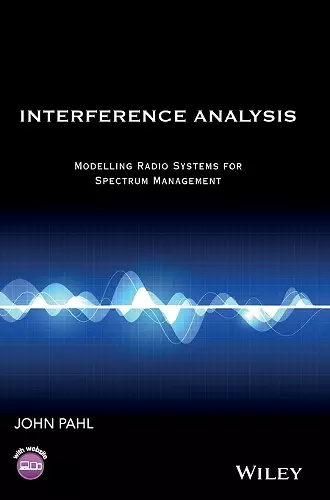Interference Analysis
Modelling Radio Systems for Spectrum Management
Format:Hardback
Publisher:John Wiley & Sons Inc
Published:3rd Jun '16
Currently unavailable, and unfortunately no date known when it will be back

The book describes how interference can be managed so that radio systems co-exist, without harmful mutual effects, within a finite amount of spectrum. This is timely in view of the increasing proliferation of wireless systems. It covers both the processes, such as regional or international coordination, as well as the engineering principles. Written by an author with extensive experience in the industry, it describes in detail the main methodologies for calculating or computing the interference between radio systems of the same type, and also between radio systems of different types
Interference analysis is fundamental to spectrum management and this book provides a comprehensive and detailed guide to this subject. The author is an expert who has chaired ITU-R meetings and contributed to many ITU-R Recommendations. The book builds from the motivations for interference analysis, including national and international regulatory regimes, all the way to sophisticated Monte Carlo analysis and descriptions of how to model specific services and their associated algorithms. It covers a wide range of systems and services, including Wi-Fi, fixed links, private mobile radio (PMR), 2G, 3G, 4G, broadcasting, radar, white space, ultra-wideband and programme making and special events plus science, navigation, maritime, aeronautical and satellite systems, including both GSO and non-GSO.
The book describes fundamental concepts such as the link budget, carrier types, access methods, noise calculations, antennas, dynamics, statistics and propagation models and then builds up to details of the interference calculation and interference analysis methodologies. In particular, the book describes how to convolve transmit and receive spectrum masks, construct link budgets with an associated interference margin and use them to derive thresholds, including apportionment. Alternative interference metrics are described together with methods to mitigate against interference.
The book is essential for both those new or experienced in the field, to help understand and advance technical studies for system design, frequency assignment, coordination or regulatory analysis.
Dr Haim Mazar, Israel
ISBN: 9781119065289
Dimensions: 246mm x 173mm x 38mm
Weight: 1066g
560 pages